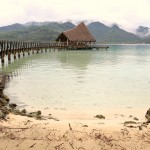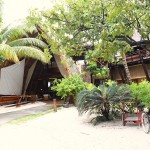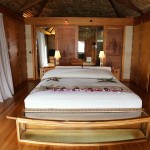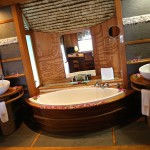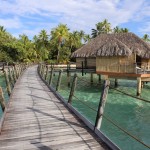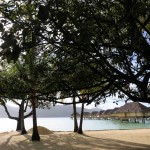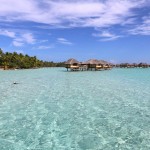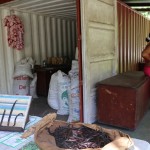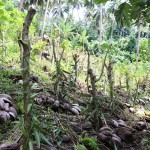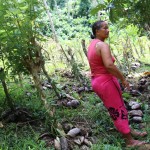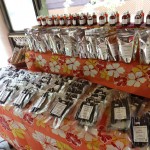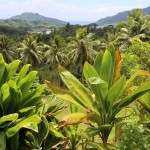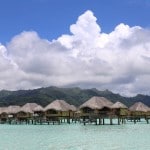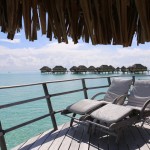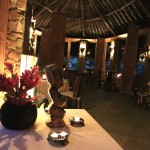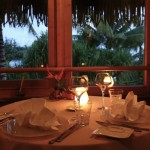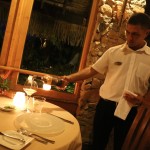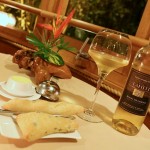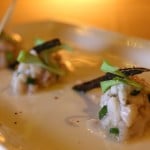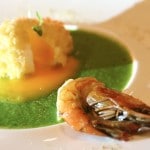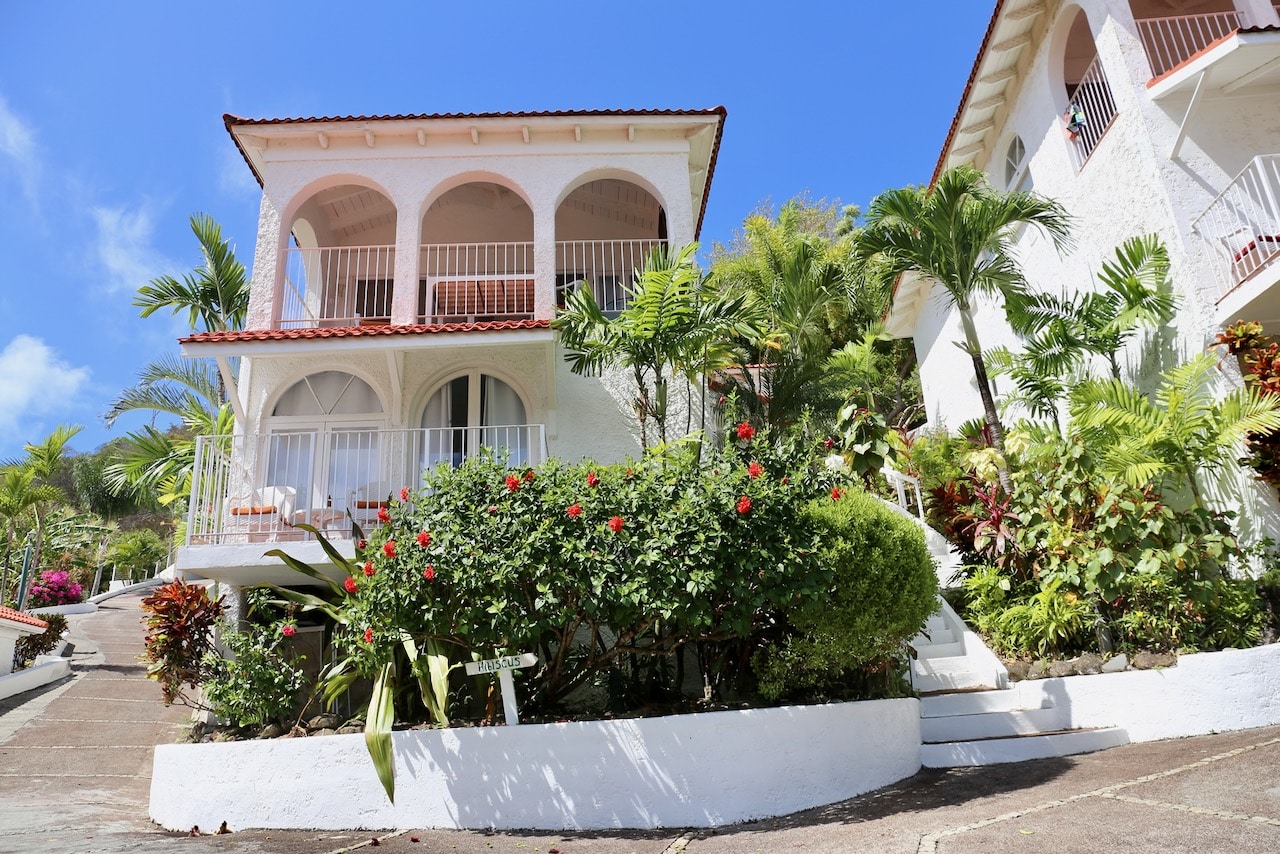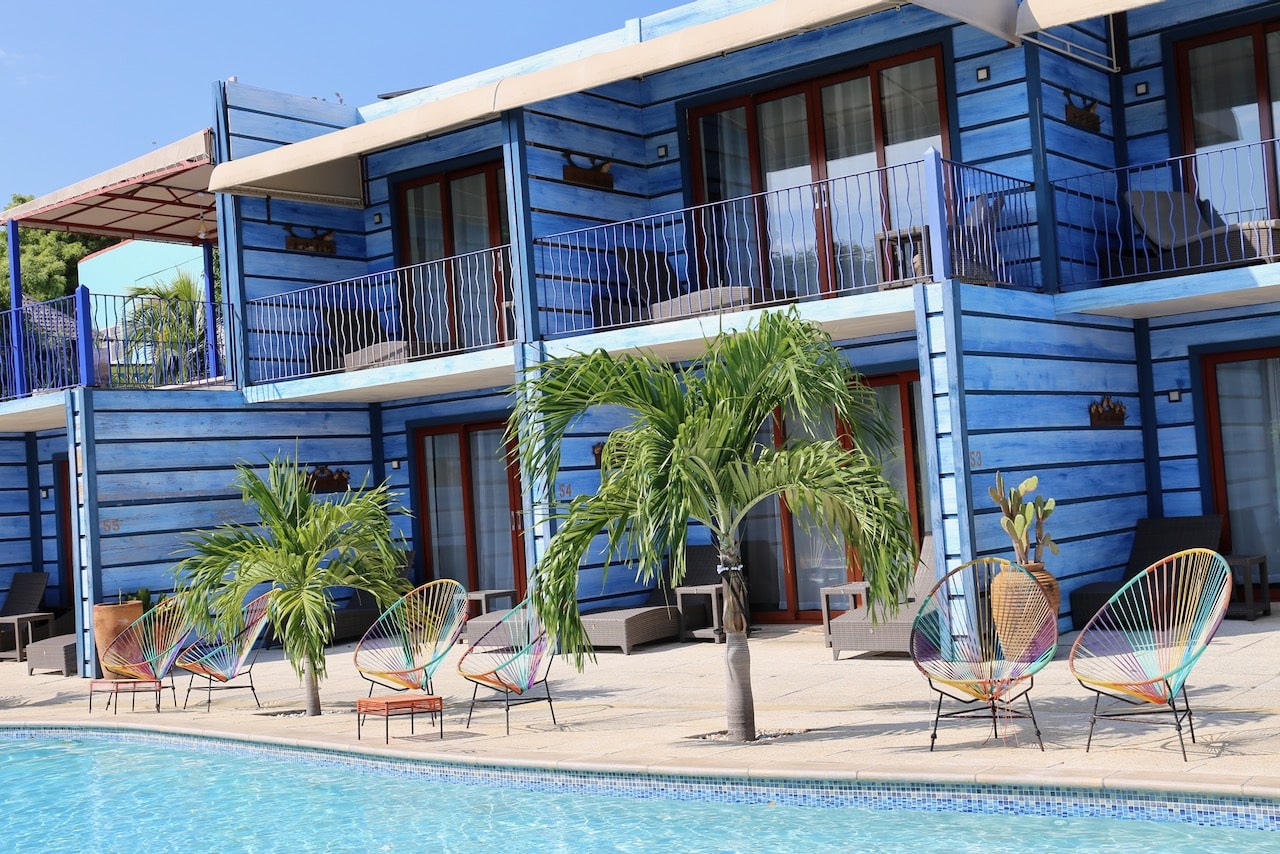I was up at the crack of dawn, zooming along the highway which cuts through the city of Papeete en route to the airport. I hopped out of my taxi and after a quick check-in spent the next hour twiddling my thumbs as I waited to board an Air Tahiti flight bound for the isle of Raiatea. Without a drop of coffee in my bloodstream I clambered up the petite plane, quickly lifting out of the morning fog and soaring across French Polynesia’s expansive archipelago. I spent the next hour glued to my window, watching in awe as dramatic volcanic islands exploded out of the sea in what can best be described as “the middle of nowhere.”
My destination that morning would be secluded Motu Tautau, a private islet which faces the famed vanilla isle of Taha’a. I couldn’t help but giggle silently to myself as I reflected on the mornings journey to paradise: quick cab, tiny plane and a luxurious boat which picks up its passengers at a dock ten steps from the Raiatea Airport. The captain grabbed my luggage and offered a warm smile chirping, “enjoy the 45 minute cruise!”
Relais & Chateaux Le Taha’a Island Resort is the perfect spot to start a French Polynesian Island hopping adventure. Tourists arrive to this remote region of the Pacific bleary-eyed from jet lag. And while the glamorous grandeur of the famed island of Bora Bora is most certainly on each guests hit list, a quiet and relaxing introduction to Tahiti is perhaps the best way to swing into the Polynesian groove.
You’ll see no golf carts or cars travelling around the property and the only sound of the modern age you’ll hear is the quiet hum of the boat which transports staff and guests to the main island. You also won’t find a beach bacchanal or late night party scene as the mood and motto of the resort is to respect the calm and serenity of the picturesque private isle allowing guests to distress and find peace from their work worries.
La Taha’a Island Resort comprises 45 overwater bungalow suits and 12 luxurious beach villas, crafted using kohou, bamboo, pandanus and local maru maru wood. Guests are greeted by a romantic room covered in pretty tropical petals and fern fronds. Each bungalow features a plush bed, rain shower, boat shaped tub perfect for bubble bathing, spacious patio and ladder which offers a quick three step plunge into the warm turquoise lagoon below.
The owners’ wish was to keep the resort as green and natural as possible, hiring architect Pierre Jean Picart to build a community around the motu’s existing vegetation. After hopping out of the infinity pool bound for the beach one learns to appreciate the property’s meandering, snakelike pathways which swing around breezy indigenous palms. Le Taha’a also proudly features a restaurant nestled up in the trees, quite unique to French Polynesia.
Six tables sit in the fine dining room at Le Ohiri, offering an intimate setting for those looking to romance themselves over pretty on the plate. Chef Julien Roux got his start in Nice and spent time honing his craft in the kitchens of Chef Jacques Maimin and Joel Robuchon. He describes his inspiration as “a taste of Provence and French Polynesia in your mouth at once.” Guests run their fingers down the menu, opting for a 3 or 5 course tasting. It is best to begin by sipping a local wine Domaine Dominique Aurov “Vin de Tahiti” Blanc de Corial produced on the isle of Rangiroa. Vitis Vinifera grown on a breezy tropical isle? Schooled me!
Chef Roux’s menu reads like a happy marriage of French classical technique and fresh Polynesian bounty. Le Mahi Mahi is served as ceviche muddled in local Taha’a vanilla and tart lime which is grown in Marquesas. L’Agneau is served a la roasted canon and paired with zucchini cannelloni stuffed with fresh goat cheese and sharp black garlic confit. A playful pavlovla offers a sweet finish featuring essence of strawberry and jasmine with floral lychee sorbet.
Most spend their time at Le Taha’a relaxing in a hammock, snorkelling across lush corral gardens or tanning by the pool. During your stay be sure to dedicate one day to the isle of Taha’a so you can get a better feel for the local way of life. I cut through the lagoon via quick 20 minute boat ride before being greeted by my smiling local guide who quickly beckoned me to sit up front in her 4×4 with cooing one year old daughter. I spent an unforgettable afternoon winding along the islands coastal roads, exploring the two products the island is most famous for, adored by jewellers and chef’s the world over for its pretty pearl and fragrant vanilla farms.
The wind whips through my hair as we swerve along a palm adorned road which practically hugs the beach. As we zoom along children at school wave from the playground at recess and we pass a handful of locals who commute on the islands dirt roads via bicycle. Our first pause is enjoyed at the Love Here Pearl Farm which is located at the end of a long wooden dock. I’m greeted by my polynesian pearl spirit guide and find myself tripping over my poor capacity to speak French. She walks us over to the end of the dock and hauls up an underwater cage filled with mud covered oysters. Grabbing two shells she motions for me to touch them before ecstatically chirping toward the horizon, “this is beautiful Bora Bora! My office has a beautiful view don’t you agree?” I giggle with her in agreeance and walk over to her workshop where she proceeds to show me how each oyster is shucked, fills me in on the painstaking process of pearling and proudly shows off the beauty of her bounty via petite jewellery shop.
A few minutes down the road and we pull up to a Tahitian Vanilla farm. I’ve been dreaming about this moment since high school when I’d watch Martha Stewart scold, “you should only ever use fresh vanilla beans from Tahiti in your kitchen.” I’m offered a tour of the family farm by mother Moeata who is a rather explosive personality, keen to ensure that each of her visitors understands the history of her craft. She starts, “today Taha’a produces 80% of the vanilla in Tahiti,” and continues to explain that the production of vanilla has drastically dropped since the 50’s. She attributes the decline to cheaper labour found in Madagascar and the Nuclear testing which took place in the region in the 1960’s-1990’s which had locals abandoning their farms for better paid work.
Moeata finishes her tale with a wink, walking us from the families hillside crop to the gift shop where she describes the painstaking process required to hand pollinate each plant. All of our jaws drop when she picks up a handful of beans and chirps, “after the vanilla has dried we massage each bean by hand to release its flavour potential.” I walk away with 200g’s of vacuum packed beans (which cost me 70USD), feeling thankful that I’ve had the opportunity to tap into one of Tahiti’s dying art forms.

